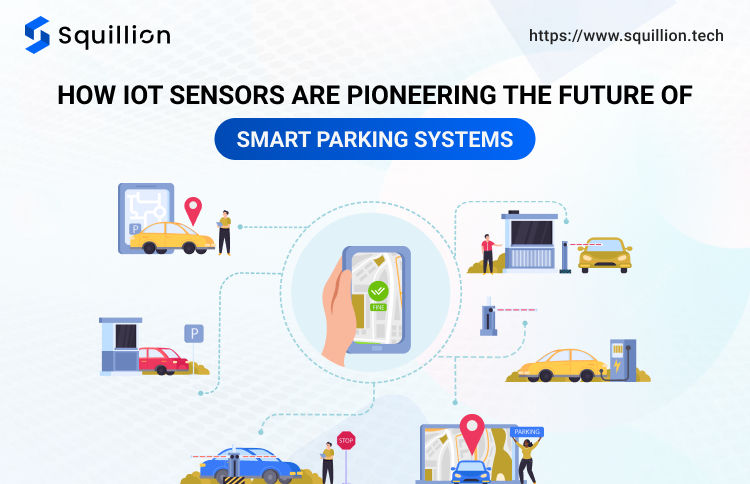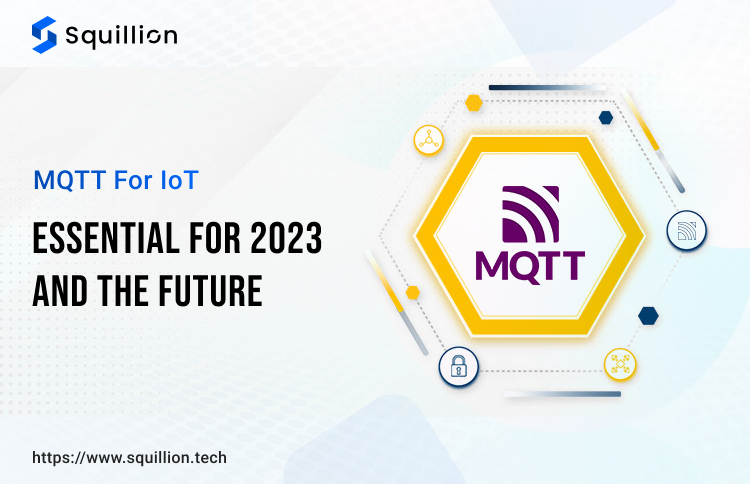In today’s fast-paced world, time is of the essence. The average American driver spends approximately 17 hours annually searching for parking spots, translating to over $345 in wasted time, fuel, and emissions.
But imagine a world where technology streamlines this process, making parking swift and hassle-free. Welcome to the realm of smart parking systems, where IoT sensors are revolutionizing urban landscapes.
What Is an IoT-Based Parking System?
IoT-based smart parking management systems are rapidly becoming the cornerstone of urban infrastructure. Forecasts suggest that by 2025, the smart parking industry could be valued at a staggering $3.8 billion.
But what makes these systems so special? At their core, they utilize sensors to detect vehicle occupancy, transmitting this data to a centralized system.
This not only streamlines parking management but also enhances the user experience, reducing the time and stress associated with traditional parking.
How IoT Smart Parking Works?
Take the example of San Francisco’s SFpark project. This initiative, harnessing the power of IoT, adjusted parking prices based on real-time demand. The result? A dramatic 50% reduction in the time drivers spent searching for parking.
The integration of IoT in smart parking is not just about placing sensors in parking spots. It’s a comprehensive system that involves data collection, real-time analysis, and user-friendly interfaces to provide instant information to drivers. Here’s a detailed breakdown:
- Sensors: These are the eyes of the system. Strategically placed in parking spots, they can detect when a vehicle occupies or vacates a space. Depending on the smart parking technology used, they might employ infrared, ultrasonic, or even magnetic field detection.
- Data Transmission: Once the sensors detect a vehicle’s presence or absence, they transmit this data to a centralized system using wireless communication. This ensures real-time updates and minimizes delays.
- Centralized Data Processing: This is the brain of the operation. The centralized system processes the data, analyzing parking trends and peak hours and even predicting future parking spot availability based on historical data.
- Digital Map Updates: The heart pumps information to the end-users. A digital map, accessible via mobile apps or digital kiosks, is updated in real time. It displays available parking spots, allowing drivers to find parking without the usual circling around.
- Payment Integration: Some advanced smart parking lot systems also integrate payment solutions. Once a driver parks their vehicle, they can pay for the parking spot using the app, eliminating the need for traditional parking meters.
Benefiting from IoT: Need of Smart Parking Systems
To truly grasp the significance of the purpose of a smart parking system, let’s explore its benefits across various industries and businesses.
- Shopping Malls: With large parking areas, malls can greatly benefit from smart parking. Real-time updates on parking availability can enhance the shopping experience, ensuring customers spend less time searching for spots and more time shopping.
- Airports: Given the high traffic and need for both short-term and long-term parking, airports can streamline parking management, offering travelers a hassle-free start to their journey.
- Universities: With large campuses and limited parking spots, universities can optimize parking for both students and faculty, reducing tardiness due to parking issues.
- Hospitals: In emergency situations, every second counts. Smart parking systems in hospitals can guide patients and visitors to the nearest available spot, reducing stress during critical times.
- Corporate Parks: Large corporations with multiple buildings can manage employee parking more efficiently, even allowing for reserved spots for VIPs or guests.
- City Downtown Areas: Urban areas with limited parking can benefit immensely. City administrations can manage public parking efficiently, reducing traffic congestion and pollution.
- Hotels & Resorts: Upscale hotels and resorts can offer an enhanced guest experience by integrating smart parking, allowing guests to check the availability of parking spots even before they arrive.
- Event Venues: Concert halls, stadiums, and other event venues can manage large influxes of vehicles during events, ensuring smooth traffic flow and enhanced visitor experience.
Delving into the Configuration of IoT-Based Smart Parking Systems
When we talk about configuring an IoT-based smart parking system, it’s not a one-size-fits-all scenario. The dimensions and capacity of the parking lot play a pivotal role in determining both the software and hardware intricacies.
For instance, sprawling parking areas, often seen in mega malls or large corporate complexes, benefit immensely from the integration of gateways combined with the LPWAN protocol for their sensors.
A noteworthy shift in the IoT realm is the growing inclination towards the LoRaWAN standard. Why? Because it’s a game-changer in amplifying the efficiency of an autonomous system.
By judiciously minimizing power consumption, it ensures that the system’s batteries last longer, reducing the hassle of frequent replacements. To put it into perspective, adopting this standard, as endorsed by the LoRa Alliance, can stretch battery life up to an impressive five years!
How Sensors Work in IoT?
In the vast ecosystem of IoT, sensors act as the primary data collectors, serving as the eyes and ears of the network. Let’s understand how the IoT sensor works.
These compact devices continuously monitor specific environmental changes, be it temperature fluctuations, motion detection, or light variations. Upon detecting any change, they convert it into an electrical signal.
This signal is then processed and transmitted to other IoT devices or central systems via the internet. In essence, sensors bridge the gap between the physical and digital worlds, enabling real-time data collection and facilitating informed decision-making in various IoT applications.
The Heartbeat of Smart Parking: Its Sensors
The efficacy of a smart parking system is anchored in its sensors. These tiny yet powerful devices are the unsung heroes, diligently detecting the presence or absence of vehicles in parking slots. Let’s dissect the types of sensors that are revolutionizing smart parking:
- Ultrasonic Sensors: Think of these as the echolocation system used by bats. Using ultrasound waves, they measure distances with heightened accuracy. But, like all heroes with a chink in their armor, they have a vulnerability: dirt and debris. If these sensors get obstructed, their efficiency might wane.
- Electromagnetic Field Detection Sensors: These are akin to metal detectors but on steroids. They can sense even the slightest perturbations in the magnetic field, especially when a metallic behemoth, like a car, is in proximity.
- Infrared Sensors: These are the thermometers of the sensor world. They gauge temperature fluctuations in their vicinity. But that’s not all; their motion-detecting capabilities make them invaluable in dynamic environments.
Squillion’s Expertise in IoT Development for Smart Parking
At Squillion, we’re not just observers of the IoT revolution; we’re active contributors. Our expertise in IoT development has positioned us at the forefront of the smart parking evolution. Here’s how we’re making a difference:
- Customized IoT Solutions: Every city and business has unique challenges. Our team of experts collaborates closely with stakeholders to design and implement tailored, smart parking solutions that address specific needs.
- End-to-End Development: From sensor integration to real-time data analytics, we handle every aspect of IoT development. Our comprehensive approach ensures seamless functionality and optimal user experience.
- Data Security: In an era where data breaches are all too common, we prioritize the security of our IoT solutions. Our systems are designed to protect user data and ensure the integrity of transmitted information.
- Innovation at Core: We’re constantly researching and innovating, ensuring our IoT solutions leverage the latest technologies and methodologies. This commitment to innovation ensures our clients always stay ahead of the curve.
- Real-world Implementations: Our IoT solutions for smart parking are not just theoretical. They’re actively deployed in various cities, streamlining parking management and enhancing user experiences.
- Client Testimonials: Our work speaks for itself. Numerous municipalities and businesses have benefited from our IoT solutions, and their testimonials attest to our expertise and the tangible benefits they’ve reaped.
Wrapping Up
The future of urban parking lies in smart solutions. A study by the British Parking Association emphasized that smart parking could potentially reduce CO2 emissions by 285,000 tons in the next decade. At Squillion, we’re dedicated to driving this change.
If you’re keen on exploring the transformative potential of IoT for your business or city, book an appointment with us. Together, let’s pave the way for a smarter, more efficient future.



